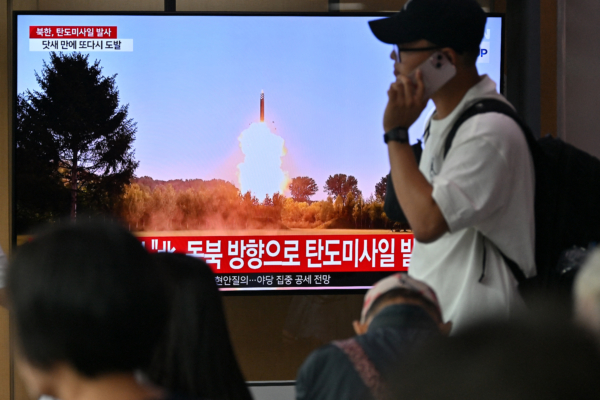The South Korean military stated that North Korea launched two ballistic missiles on Monday (July 1st). Initial evaluation by the military suggested that one of the missiles may have failed to launch. This is North Korea’s second missile launch in less than a week.
The first short-range ballistic missile was launched around 5:05 AM local time from the area of Changyeon County, South Hwanghae Province in North Korea towards the northeast. The South Korean Joint Chiefs of Staff reported that around 5:15 AM, another missile of unknown type was launched from the same region.
The South Korean Ministry of Defense indicated that these two missiles had different flight distances, with the first missile flying approximately 600 kilometers (about 373 miles) and the second flying 120 kilometers (about 75 miles).
When asked about the difference in flight distances, Lee Sung-jun, a spokesperson for the South Korean Joint Chiefs of Staff, told reporters, “The second missile may have experienced abnormal flight early on.” Lee added, “If it exploded during abnormal flight, debris could potentially fall inland.” He further explained that “explosion” is just one of the many possibilities being analyzed by the military.
Based on the launch site of the missiles, if a missile were to explode after flying 120 kilometers, its debris could potentially fall near Pyongyang.
In a statement, the Joint Chiefs of Staff Meeting strongly condemned North Korea’s missile launch, considering it a serious provocation and threat to the peace and stability of the Korean Peninsula.
The statement also mentioned, “The South Korean military will maintain the capability and posture to overwhelmingly respond to any provocation and closely monitor North Korea’s activities under a robust South Korea-U.S. joint defense posture.”
This marks North Korea’s second missile launch in five days. On June 26th around 5:30 AM, North Korea launched a ballistic missile towards the east from the vicinity of Pyongyang. North Korean state media described it the following day as a “successful” test of a multiple warhead capability.
However, the South Korean military believes that North Korea likely launched a hypersonic missile, but the missile experienced unstable flight during the ascent, leading to an explosion in the air. Images were released as evidence, countering North Korea’s claims of exaggeration and concealment of the facts.
In mid-June, North Korean leader Kim Jong-un hosted Russian President Putin in Pyongyang, marking the first visit by a Russian President to North Korea in 24 years. During the visit, the two countries reached a security agreement, pledging immediate military assistance to each other in the event of an attack, causing concern among the United States and its key Asian allies Japan and South Korea.
On Thursday (June 27th), the United States, Japan, and South Korea conducted the inaugural “Freedom Edge” trilateral exercise to promote peace and stability in the Indo-Pacific region.
According to a joint statement, the U.S., Japan, and Korea expressed that the “Freedom Edge exercise reflects the commitment of Japan, South Korea, and the U.S. to enhance trilateral interoperability and uphold freedom to maintain peace and stability in the Indo-Pacific region, including the Korean Peninsula.”
On Sunday, North Korea criticized the joint military exercises conducted by the U.S., Japan, and South Korea, warning that such exercises would receive “overwhelming” responses.

